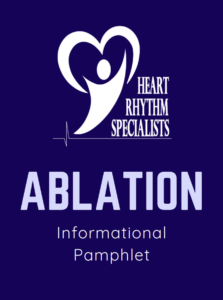What is an Ablation?
A cardiac ablation is a minimally invasive procedure that uses radiofrequency energy to cauterize or “ablate” tissue in the heart that conducts an abnormal heart rhythm. The scarred tissue stops the arrhythmia-causing signal from conducting.
What is an Ablation used for?
The procedure is used to treat arrhythmias and conditions such as:
- atrial fibrillation
- atrial flutter
- ventricular tachycardia
- supraventricular tachycardia
- Wolff-Parkinson-White syndrome
What happens in an Ablation?
- During an ablation, Dr. Yoo will insert electrode catheters through a sheath into a major vein in the leg, near the groin. The catheters will move up the vein and feed into the heart where they will first map the heart’s layout and figure out which part of the heart is conducting abnormal electrical signals.
- Once this tissue is found, radiofrequency energy from the tip of the electrode catheter is used to cauterize that area and stop this tissue from conducting electrical signals. This process may be repeated depending on the number and locations of arrhythmias.
- Once he has finished cauterizing the problematic tissue, Dr. Yoo will check the heart rhythm to make sure everything is normal and then the procedure is complete.
Pre-Procedure Instructions
- Do not eat for 6-8 hours, or the night before the procedure.
- Tell Dr. Yoo about your pacemaker/ICD if you have one.
- Notify Dr. Yoo about any medications you are taking.
- Have a friend or family member drive you to and from your procedure.
Post-Procedure Instructions
- Do not drive for 24 hours after the procedure.
- Notify Dr. Yoo about any symptoms you have such as bleeding, swelling, dizziness, numbness, or increased pain.
- Do not drink alcohol for 24 hours after the procedure.
- Refrain from strenuous activity for 7-10 days after the procedure and follow Dr. Yoo’s instructions on when to return to normal activity.
